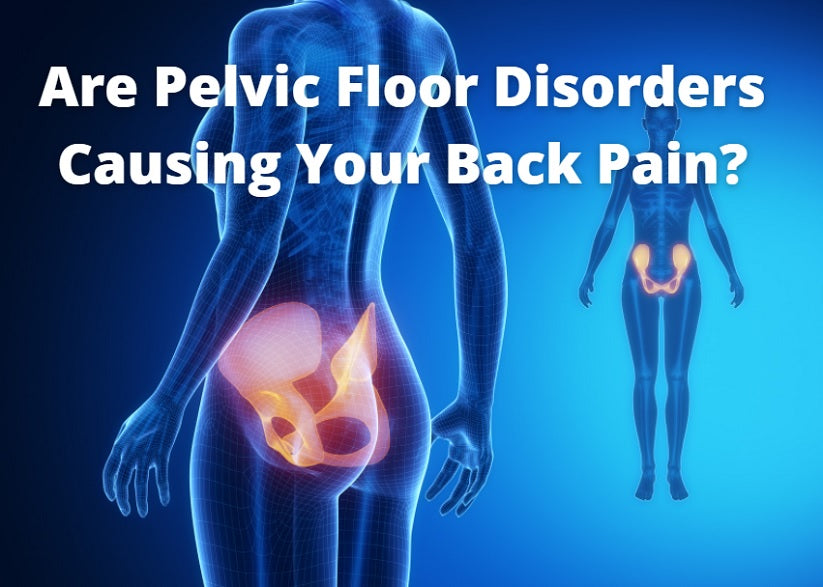Back pain is a very common problem in most adults and sometimes there’s hip pain as well. If you have low back pain that never goes away or keeps on coming back a few days after back pain treatment, massage, or exercises then it’s time to find out what’s causing it before it gets worst.
There are a few underlying causes of chronic back pain and in several cases, problems having to do with the pelvic floor are overlooked. Your back pain just won’t go away unless these issues are treated.
What is a Pelvic Floor?
The pelvic floor refers to a group of muscles that can be found at the base (floor) of your pelvis. It’s composed of muscles, ligaments, and tendons that are connected to the floor of the pelvis and stretches alongside the pubic bone front, all over the hip bone sides, and towards the base of the back where you can find the tailbone. Other muscles connected to the pelvis and tailbone are the hip, gluteal, abdominal, vaginal (in women), and anal muscles.
The pelvic floor also helps in the intra-abdominal pressure necessary for doing various physical activities and movements. It also supports the organs located in your pelvis such as the bladder, rectum, and prostate in men or uterus in women. The contraction and relaxation of the pelvic floor muscles let you manage your urination, bowel movement, and sexual health.

What are Pelvic Floor Disorders (PDFs)?
PDFs are more common in women than men. Pelvic floor disorders happen when the muscles that make up the pelvic floor become weak or sustain some form of damage. Having a damaged pelvic floor means it will be unable to continue giving support to your organs to help them function effectively. As the structure continues to weaken, normal operation of the bladder, uterus, bowel, rectum, and vagina can be affected.
Three common types of PDFs:
Pelvic organ prolapse - The uterus, bladder, and bowel are your pelvic organs that are held together by tissues and ligaments. The pelvic floor where these organs sit also helps in providing support. When the pelvic floor becomes weak and the supporting ligaments and tissues become stretched or injured, the pelvic organs will not stay secured in their places and might protrude or drop down the vagina or anus.
Bladder problems - Urinary incontinence, frequent urinary tract infections (UTIs), and having difficulty in peeing or emptying your bladder completely.
Bowel problems - Lack of bowel control or fecal incontinence. When solid or liquid stool leaks from the rectum.
What are the causes of Pelvic Floor Disorders?.
- Childbirth - Childbirths especially vaginal births can put extreme pressure on the pelvic floor during delivery.
- Pelvic surgery/injury - Injury from accidents, falls, or surgery can cause PDFs
- Obesity - Having too much weight can put excessive strain on the bladder. It can also cause the pelvic muscles to lack strength.
- Old age - Pelvic muscle strength decreases as we age.
- Menopause - The muscles of the pelvic floor usually weakens during menopause.
- Emotional stress - Emotional stress can leave you feeling anxious and have the need to pee or poop often.
- Genetic - Some people are born with weaker pelvic floor muscles than others. If PFDs run in the family then there’s a great chance you’ll have it too.
- Race - White people are more prone to have prolapse and urinary incontinence caused by chronic coughing.
- Ethnicity - Mexican Americans are more likely to suffer from urine leakage than any other with Latin or Hispanic ethnicity. But this is maybe due to the language barrier or fear of seeking medical help.
- Diet - When water or fiber is not enough in one’s diet, bowel movement is affected. Making the stool hard or pooping becomes irregular.
- Smoking - Smoking is bad in general. Aside from the other bad effects it has, it is detrimental to bladder health and can harm connective tissues including the ones found in the pelvic area.
- Heavy lifting - Jobs that require heavy lifting or extreme exertion can increase your chance of developing PFDs.
- Constipation - Constipation causes you to strain and put pressure on the rectal and vaginal wall.
- Chronic coughing - Chronic coughing can add more pressure to the pelvis and abdomen.
- Injuries or health conditions that affect the nerves - Stroke, Parkinson’s disease, diabetes, spinal stenosis, or back surgery are just some of the health issues that can cause PDFs.

Topics like pelvic floor disorders, incontinence, or leakage can make you uncomfortable to talk about it with a health practitioner. However, these are common health issues that can be treated.
If you have pelvic problems, don’t hesitate to consult your doctor. You don’t have to compromise the quality of your life for this common and highly treatable health problem.
You can read 7 Vital Things To Know About Hip Health and check out Yamuna Save Your Hips Kit to see how hip health can help.
Here’s a video that can help you strengthen your pelvic floor muscles:
You might also be interested to read 15 Benefits of Aerobic Exercise and 21 Essential Home Yoga Equipment.

